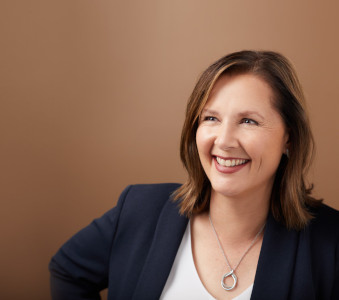Speaking
Book Lisa to speak at your event or conference, privately to your leadership team or board, or with some of your customers.
Lisa is a passionate and engaging presenter and to make your to make the session more meaningful for each attendee receive a signed copy of Lisa’s book, ‘Risk Starts And Ends With People‘.

Lisa Sisson
Author, speaker and founder of risk consultancy, Unearth, Lisa Sisson is driven by a strong sense of purpose. Her mission in life and business is the same – to create a safer world.
Lisa believes when people feel safe, they are empowered to give their best efforts without fear of failure. This purpose underpins her work at Unearth and has driven a unique perspective within an industry that is heavily process and technology driven.
Lisa’s three decade career includes two decades in technology and services with global brands and niche specialised companies, where she built a reputation for tackling the hard problems that most shy away from.
Since founding Unearth in 2013, Lisa has worked with national security, emergency services and some of Australia’s largest commercial brands. Her background with specialised analytics in areas like insider threat and human behaviour, cyber, plus threat and hazards has delivered outstanding results for Unearth’s clients; on more than one occasion, creating history.
Today Lisa helps leaders who feel distracted and overwhelmed with “managing risk”, by demystifying and tackling risk within their organisation.
Lisa’s first book and Amazon Best Seller – “Risk Starts And Ends With People” – was released in September 2021 and is available at all major online bookstores.
Lisa’s Speaking Topics
Lisa brings a whole new perspective to the way organisations understand and approach risk. She is available as a contributor to panel discussions and she speaks with passion and eloquence on the following topics:
Risk Starts And Ends With People
Risk management has become increasingly cumbersome, costly and a distraction for many organisations, but once you understand that people are at the centre of all risk, you can move forward to empower your greatest risk management asset… your people.
This Keynote invites an audience to understand how to:
- Unlock the value of your people to mitigate risk and open up opportunity
- Break risk down so you have no need to fear it
- Build a healthy and productive work environment with an engaged and motivated workforce
- ‘PROTECT the house’ – your organisation – with an innovative and practical approach to risk
The Safe Zone: Risk Management’s Greatest Asset
One of the fundamental steps in positively turning the dial on risk management is creating a Safe Zone. This can be a challenge in organisations that have a punitive or adversarial culture. But if people in an organisation experience negative consequences when they fail, there is no incentive for them to work collaboratively to reduce risk, resulting in a culture of concealment, secrecy, cover-ups, blame-shifting and scapegoating. Not only is this a toxic environment in which to work, it also creates blind spots of internal risk, which become almost impossible to identify or mitigate.
By creating a Safe Zone, we build an environment that allows people to feel safe to succeed without fear of failure, and without ramifications on the business. Because it’s only when people feel safe to fail, that they also feel safe to succeed. By creating a Safe Zone in your organisation, you will support the development of your organisations’ greatest risk management asset, your people. Your people become the risk sensors of your organisation.
Risk And Opportunity: Two Sides Of The Same Coin
Risk and opportunity are the opposite sides of the same coin.
Risk is uncomfortable topic. Which is understandable, as there are responsibilities associated to risk and often significant consequences. The thing about planning for risk is that it can make us fixate on potential threats. To protect what we value most, we can become so worried about the things that might happen that we introduce systems of protection, which are themselves sources of risk. The introduction of processes to reduce risk or human errors, can create overhead that slow down our businesses. Not to mention frustrate our employees and even create a culture of suspicion and mistrust. At times this can been seen to cause more harm than the original threats we hoped to protect ourselves against.
But risk is not something you need to fear; you just need to understand it. Even though it can be uncomfortable to do so, there is reward in the right type of effort, which is why the quote by Joseph Campbell is relevant, “The cave you fear to enter holds the treasure you seek.”
Move beyond the anxiety and explore a new perspective on risk, unlock the power of your people to become your greatest risk management asset. Because you need to focus on risk, with, through and by your people if you are truly going to solve your risk exposure.